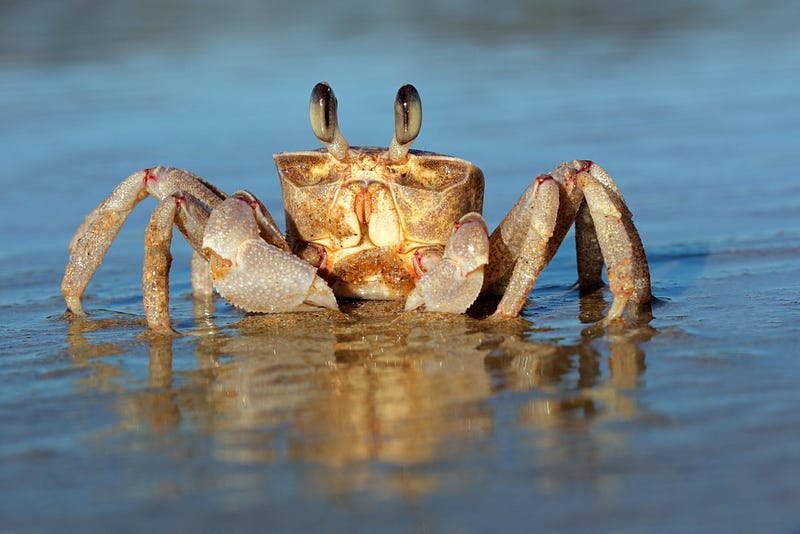Acid Ocean: How Carbon is Destroying the Shells of Marine Animals
By Kelli Valentini, Bioengineering, 2024

The effects of carbon pollution from the burning of fossil fuels have long been studied and debated by scientists around the world. Its atmospheric influence is usually the focal point of discussion as greenhouse gases contribute heavily to global warming and climate change. However, carbon emissions do not only remain in the atmosphere. They also greatly influence the ocean, including the shells of several animals that inhabit these waters.
Approximately one third of all human-sourced carbon emissions are absorbed by the ocean, making it one of the Earth’s largest carbon sinks. Studies demonstrate that in the past two decades, carbon dioxide in seawater has paralleled the substantially increasing rate of atmospheric carbon dioxide.
Studies demonstrate that in the past two decades, carbon dioxide in seawater has paralleled the substantially increasing rate of atmospheric carbon dioxide.
When emissions are absorbed by the ocean, some of this atmospheric carbon dioxide will remain as a dissolved gas. However, the majority reacts with water to form carbonic acid. This carbonic acid dissociates into hydrogen ions and hydrogen carbonate. The free-floating hydrogen ions lower the pH of the ocean, but they also bond with carbonate ions to form bicarbonate ions.
Carbonate ions are crucial for calcification, or the accumulation of calcium salts to harden tissues. Marine organisms use carbonate ions to form calcium carbonate, a critical component to many shells and exoskeletons. The bonding of hydrogen ions with carbonate ions reduces the amount of free carbonate ions available for calcification. Calcification is integral to a number of marine animals. In many species of mollusks, calcium carbonate is the main component of their shells. Corals form their exoskeleton through calcification. Many species of foraminifera, coccolithophores, crustaceans, and echinoderms also rely on the presence of carbonate ions in seawater.
Extensive research demonstrates that these biocalcification processes are vulnerable to environmental change. Most, if not all, organisms require a greater energy expenditure to calcify in high carbon dioxide conditions, thus putting more environmental pressure on the organisms and reducing their likelihood to survive.
Most, if not all, organisms require a greater energy expenditure to calcify in high carbon dioxide conditions, thus putting more environmental pressure on the organisms and reducing their likelihood to survive.
While the negative effects of high acidity have long been studied in labs, observable impacts are prematurely seen among the wild-born populations of ocean species. The National Oceanic and Atmospheric Administration recently funded a study of the larval Dungeness crab population off the U.S. West Coast. Lead author Nina Bednarsek observed the first natural evidence of shell dissolution in crustaceans as a result of ocean acidification. The study found an 8.3 percent increase in shell dissolving, as well as decreased size of the crab larva. The acidic pH also damaged mechanoreceptors, which are small structures, similar to a cat’s whiskers, that the crabs use to navigate. These changes will have disastrous impacts on the population in the long term; the crabs are predicted to experience difficulties with swimming, floating, avoiding predators, and foraging.
Though the Dungeness crab study is the first observation of ocean acidification affecting a wild crustacean population, the authors implore that other ocean species may soon feel the consequences. As Bednarsek told CNN, “if the crabs are affected already, we really need to make sure we pay much more attention to various components of the food chain before it is too late.” In oceanic locations of naturally acidic pH, such as near hydrothermal vents, species like corals, sea urchins, and shelled mollusks do not exist. The energy cost is too high. As climate change progresses, the rest of the ocean may begin to resemble these zones.
With unchecked carbon emissions, more and more anthropomorphic carbon will end up absorbed by the ocean, increasing the acidity and decreasing the amount of carbonate ions available for calcification. The resulting structural change, while seemingly small, can have a catastrophic impact on the ocean’s ecosystems.
Science of the Total Environment (2020). DOI:10.1016/j.scitotenv.2020.136610
Science Advances (2020). DOI:10.1016/j.scitotenv.2020.136610
Biogeosciences (2012). DOI:https://doi.org/10.5194/bg-9-2509-2012
